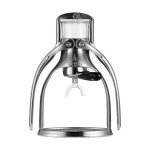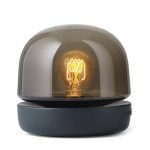Breast Shields
Breast covers for breastfeeding can refer to different products that provide coverage and support during breastfeeding. Here are a few types of breast covers commonly used:
Nipple Shields: Nipple shields are thin silicone devices that are placed over the nipple and areola during breastfeeding. They can help with latch issues, sore nipples, or inverted nipples. Nipple shields provide a barrier between the baby’s mouth and the breast, while still allowing milk flow. It’s important to note that nipple shields should be used under the guidance of a lactation consultant or healthcare professional to ensure proper usage and to address any underlying breastfeeding concerns.
Silver Nursing Cups: Silver nursing cups, also known as silverettes, are nipple covers made of 925 silver. They are designed to provide relief and promote healing for cracked or sore nipples during breastfeeding. Silver has antimicrobial properties and is believed to have soothing and healing effects. Silver nursing cups are worn between feedings and can be used with or without breast pads. They are typically used in conjunction with other measures, such as proper latch and breastfeeding techniques.
It’s important to note that while these breast covers may have benefits for certain breastfeeding situations, they may not be necessary or suitable for everyone. It’s always recommended to consult with a lactation consultant or healthcare professional for personalized advice and guidance on breastfeeding techniques and any specific concerns you may have.
Please keep in mind that the search results provided are for informational purposes only and should not replace professional medical advice.
What are the best ways to prevent nipple soreness while breastfeeding?
To prevent nipple soreness while breastfeeding, consider the following tips:
Ensure a Proper Latch: A proper latch is essential for preventing nipple soreness. Make sure your baby is latching onto the breast correctly, with a wide mouth and the nipple and a good portion of the areola in their mouth. Seek guidance from a lactation consultant or breastfeeding specialist if you need assistance with latch techniques .
Find a Comfortable Position: Experiment with different breastfeeding positions to find the one that is most comfortable for you and your baby. Proper positioning can help ensure a good latch and reduce the risk of nipple soreness.
Break the Suction Properly: When your baby finishes feeding, gently insert your finger into the corner of their mouth to break the suction before removing them from the breast. This can help prevent nipple trauma and soreness .
Take Care of Your Nipples: After breastfeeding, inspect your nipples. If they appear blanched or pinched, it may indicate an issue with the latch or positioning. Seek assistance from a lactation consultant or breastfeeding specialist to make necessary adjustments 1.
Use Breast Milk: Apply a few drops of breast milk to your nipples after each feeding and allow them to air dry. Breast milk has natural healing properties and can help soothe and protect the nipples.
Avoid Harsh Soaps and Lotions: When washing your breasts, use mild, fragrance-free soap and avoid harsh chemicals or lotions that can dry out or irritate the nipples.
Protect Against Friction: Avoid clothing that causes friction against your nipples, such as rough fabrics or tight bras. Opt for soft, breathable fabrics and consider wearing breast pads to provide a barrier between your nipples and clothing.
Apply Cool Compresses: If you experience nipple soreness, applying cool compresses after breastfeeding can help reduce swelling and provide relief. Use a clean, damp cloth or a cool gel pad on your nipples for a few minutes.
Remember, if you continue to experience nipple soreness despite trying these preventive measures, it's important to seek guidance from a lactation consultant or healthcare professional for further evaluation and assistance.
Are breastfeeding covers safe?
Breastfeeding covers can be safe to use as long as they are made with breathable fabric and are not tight-fitting, allowing for proper airflow. It's important to ensure that there is enough room for both you and your baby while using the cover .
Breastfeeding covers are designed to provide privacy and help mothers feel more comfortable while nursing in public. They can also serve as a multi-functional accessory, such as a baby car seat cover
When choosing a breastfeeding cover, consider factors such as ease of use, coverage, and the ability to maintain eye contact with your baby. Some covers have a stiffening neckline system that allows for easy viewing and bonding with your baby .
However, it's worth noting that breastfeeding covers are not strictly necessary, and some mothers may choose not to use them. It's a personal choice based on individual comfort and preference. Some mothers may prefer other methods, such as using loose clothing or finding private spaces for breastfeeding.
As with any baby product, it's important to follow the manufacturer's instructions for safe use and maintenance. If you have any concerns or questions about using a breastfeeding cover, it's always a good idea to consult with a lactation consultant or healthcare professional for guidance.
How do I choose a nursing cover?
When choosing a nursing cover, consider the following factors:
Coverage: Look for a nursing cover that provides ample coverage to ensure your privacy while breastfeeding. Consider the size and design of the cover to ensure it adequately covers your front and sides.
Fabric: Choose a nursing cover made from breathable and lightweight fabric to ensure proper airflow and prevent overheating for both you and your baby. Popular fabric choices include muslin, cotton, or blends of organic materials.
Ease of Use: Consider how easy it is to put on and take off the nursing cover. Look for covers with adjustable straps or necklines that allow for a customizable fit. Some covers may have features like buckles or snaps for added convenience.
Versatility: Some nursing covers can be used for multiple purposes, such as a car seat cover or a scarf. If you prefer a multi-functional option, look for covers that offer versatility beyond breastfeeding.
Washing and Maintenance: Check the care instructions for the nursing cover to ensure it can be easily cleaned and maintained. Look for covers that are machine washable and quick-drying for convenience.
Style and Design: Nursing covers come in various styles and designs. Choose one that aligns with your personal style and makes you feel comfortable and confident while breastfeeding.
Reviews and Recommendations: Read reviews from other breastfeeding mothers to get insights into the quality, functionality, and durability of different nursing covers. Recommendations from trusted sources can also help guide your decision-making process.
Remember, the choice of a nursing cover is subjective and depends on your personal preferences and needs. It's important to find a cover that you feel comfortable using and that meets your specific requirements for breastfeeding in public or private settings.







